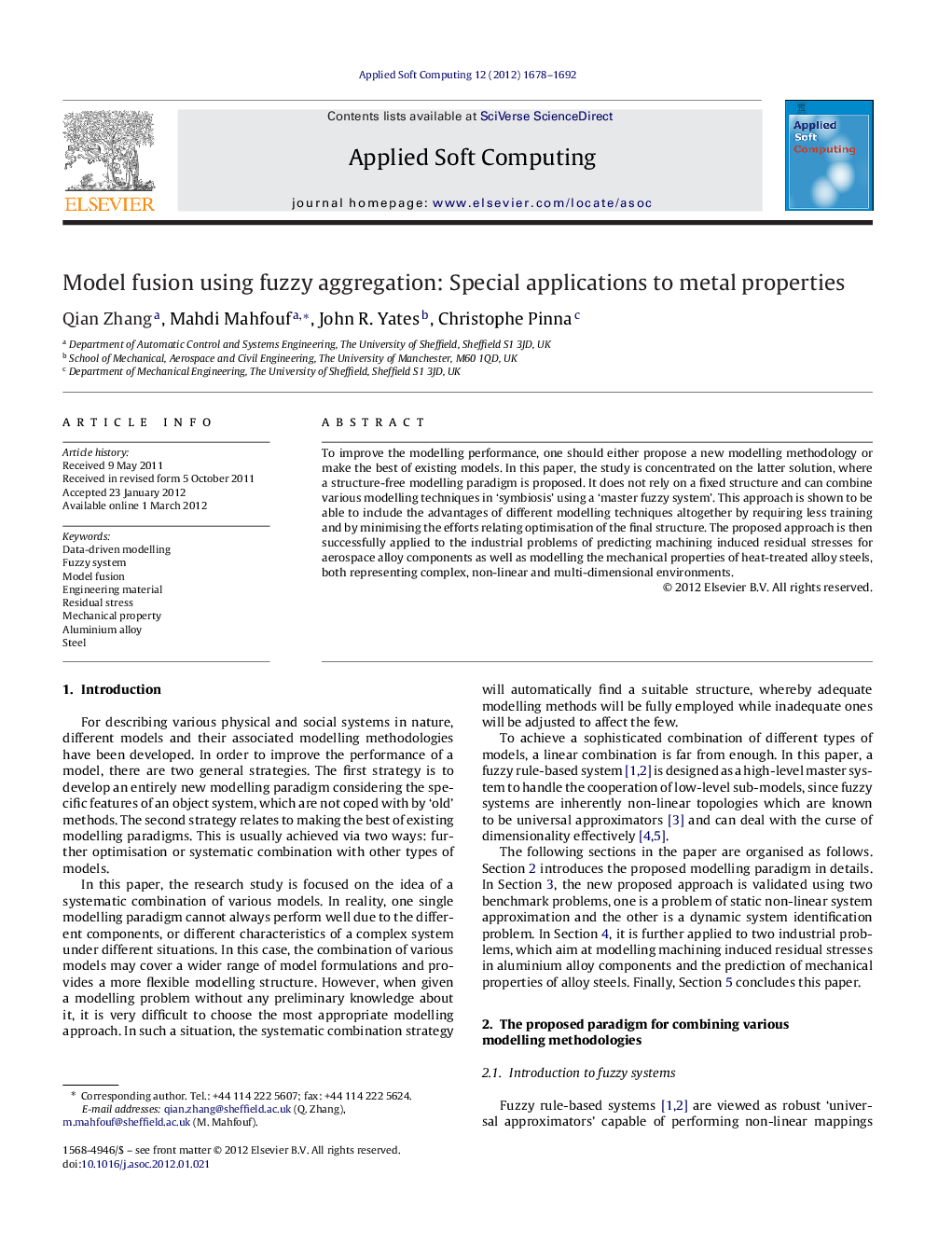| Article ID | Journal | Published Year | Pages | File Type |
|---|---|---|---|---|
| 495840 | Applied Soft Computing | 2012 | 15 Pages |
To improve the modelling performance, one should either propose a new modelling methodology or make the best of existing models. In this paper, the study is concentrated on the latter solution, where a structure-free modelling paradigm is proposed. It does not rely on a fixed structure and can combine various modelling techniques in ‘symbiosis’ using a ‘master fuzzy system’. This approach is shown to be able to include the advantages of different modelling techniques altogether by requiring less training and by minimising the efforts relating optimisation of the final structure. The proposed approach is then successfully applied to the industrial problems of predicting machining induced residual stresses for aerospace alloy components as well as modelling the mechanical properties of heat-treated alloy steels, both representing complex, non-linear and multi-dimensional environments.
Graphical abstractFigure optionsDownload full-size imageDownload as PowerPoint slideHighlights► Proposed a master fuzzy system for model fusion of various modelling techniques. ► Improves modelling performance and does not rely on a fixed structure. ► Tested by complex, non-linear and multi-dimensional problems. ► Applied to the prediction of machining induced residual stress for aerospace alloy. ► Applied to the prediction of mechanical properties of heat-treated steels.
